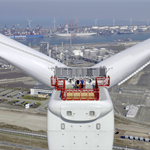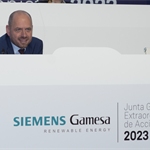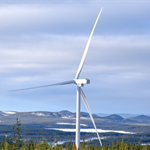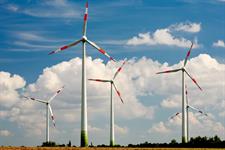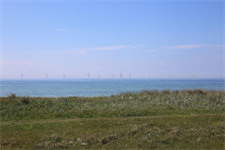Wind turbine manufacturer Siemens Gamesa makes loss in ‘challenging’ Q3
Energy Disrupter

Siemens Gamesa made a heavy loss in the third quarter of its financial year, as the manufacturer reported challenges with commodity prices, its supply chain, and the volatility of the offshore wind market.
Its revenue increased 12% year on year to €2.7 billion in the third quarter of its financial year (1 April-30 June).
But it also recorded Ebit before purchase price allocation (PPA) and integration and restructuring (I&R) costs of negative €151 million, with an Ebit margin of negative 5.6%. This compares to negative €161 million Ebit, before PPA and I&R costs one year ago and an Ebit margin of negative 6.7%.
The manufacturer reported a net loss of €314 million in Q3, compared to a €466 million net loss one year ago.
However, CEO Andreas Nauen described the company as “well-placed” due to its order backlog – the capacity of which increased 3% year on year to €32.6 billion by the end of the quarter.
He said: “We are operating in what is currently a very difficult environment and have taken additional steps to balance our risk profile as we focus on delivering long-term sustainable profitability.
“Despite current challenges, the company is soundly placed to take advantage of the huge potential of wind energy, which is reflected in our strong order backlog.”
‘Challenging’ quarter
Earlier this month, the turbine manufacturer had warned of a loss-making quarter, citing a sharp increase in raw material prices and rising costs for ramping up its 5.X onshore wind platform. In a filing with the Spanish stock exchange, the manufacturer noted that these factors had cost the company €229 million in the quarter.
In a conference call following publication of Siemens Gamesa’s Q3 results, Nauen explained that the rise in material prices was largely due to steel mills shutting during the coronavirus pandemic, and therefore reducing supply, and then steel demand in markets, such as China, recovering faster than expected. Nauen added that it was difficult to hedge steel prices – as the manufacturer needs to know specific project details before being able to specify which type of steel it needs – and so would be passing on the cost increase to customers.
Siemens Gamesa has now introduced clauses into its onshore contracts to protect against commodity price volatility – especially for steel towers – Siemens Gamesa stated. The manufacturer is also pricing in cost inflation into contracts to ensure it can procure the materials needed to deliver its order backlog in the 2022 financial year (1 October-30 September).
The manufacturer has set up a task force to monitor the ramp-up of its 5.X platform in Brazil and northern Europe, and is closely monitoring projects that it has committed to for 2022, Nauen told reporters in the Q3 conference call.
Publishing its third-quarter results, Siemens Gamesa cited the volatility of the offshore wind market as the key factor behind its €1.52 billion order intake in Q3 – well below the €5.3 billion in the third quarter of last year.
Orders for both offshore wind turbines and service were heavily concentrated in the second quarter of the year, the manufacturer explained. It received offshore wind orders worth €146 million in Q3, compared to €3.2 billion of offshore orders in the last 12 months and €3.3 billion in Q3 2020.
This volatility also impacted service orders in the third quarter. Service orders were worth €534 million in Q3. By comparison, service order intake in the last 12 months was €3 billion.
Elsewhere, the capacity of Siemens Gamesa’s onshore orders increased by 13% year on year to 1,352MW in Q3, but their value of €840 million was down 4% from last year.
‘Bright’ future
However, Siemens Gamesa CEO Nauen was buoyed by the company’s €32.6 billion order backlog and growth potential from future auctions and countries’ and companies’ decarbonisation commitments and the role of renewable energy in Covid-19 economic recovery packages.
The company is working with customers to prepare for the large volume of auctions expected in 2021 and subsequent years. It projects 17GW of offshore wind capacity to be auctioned in 2021.
Nauen said: “Our industry has bright prospects ahead, supported by a growing political and public commitment to fighting climate change by moving to a zero carbon emission future.”
Siemens Gamesa downgraded its financial guidance for its 2021 financial year (1 October-30 September) earlier this month.
The company expects group revenue for the financial year to be at the low end of the €10.2-10.5 billion range it had communicated alongside results of the second quarter on 30 April.
It also lowered expectations for its group Ebit margin before purchase price allocation (PPA) and integration and restructuring costs (I&R) to between -1% and 0% – down from the 3-5% range communicated at the end of April.





